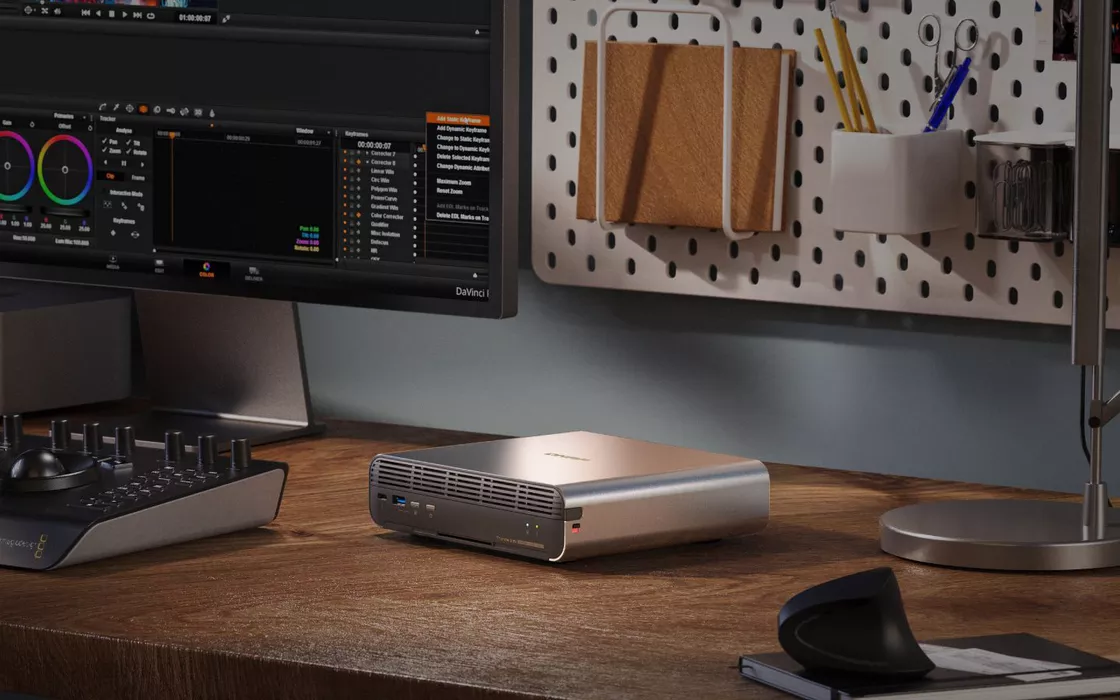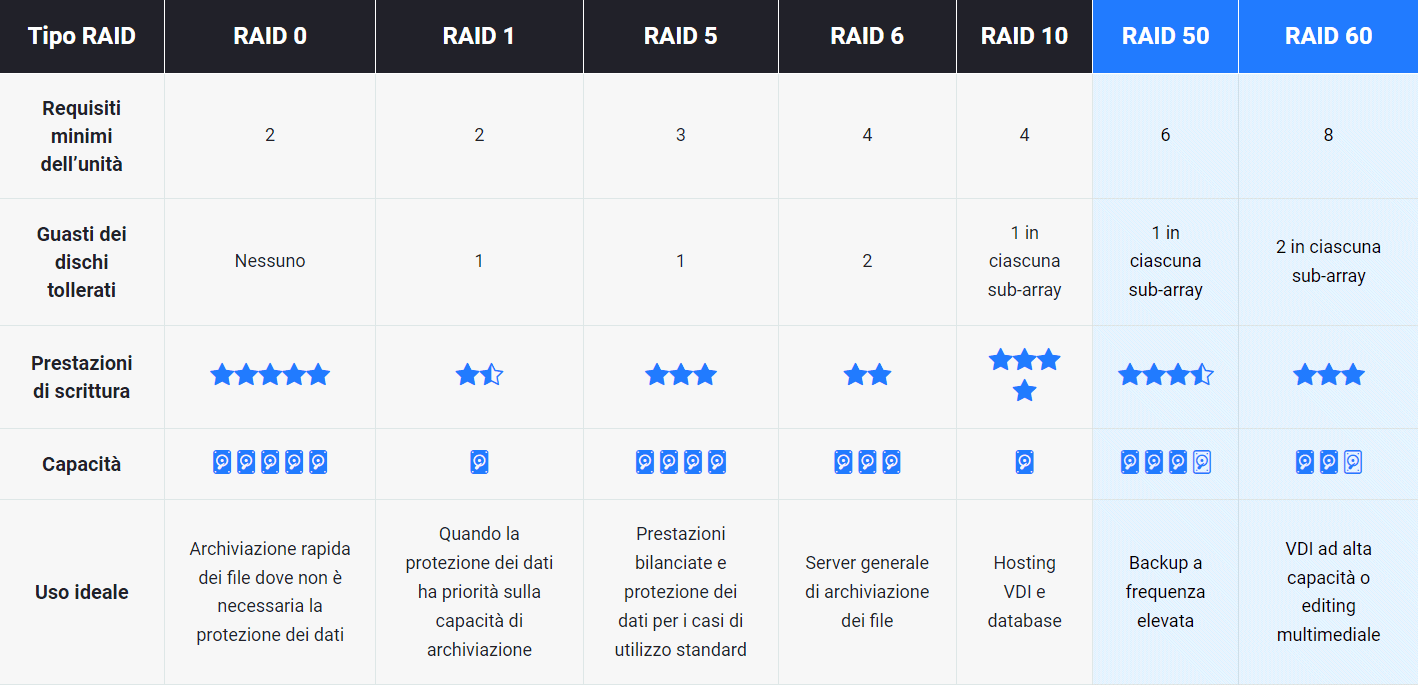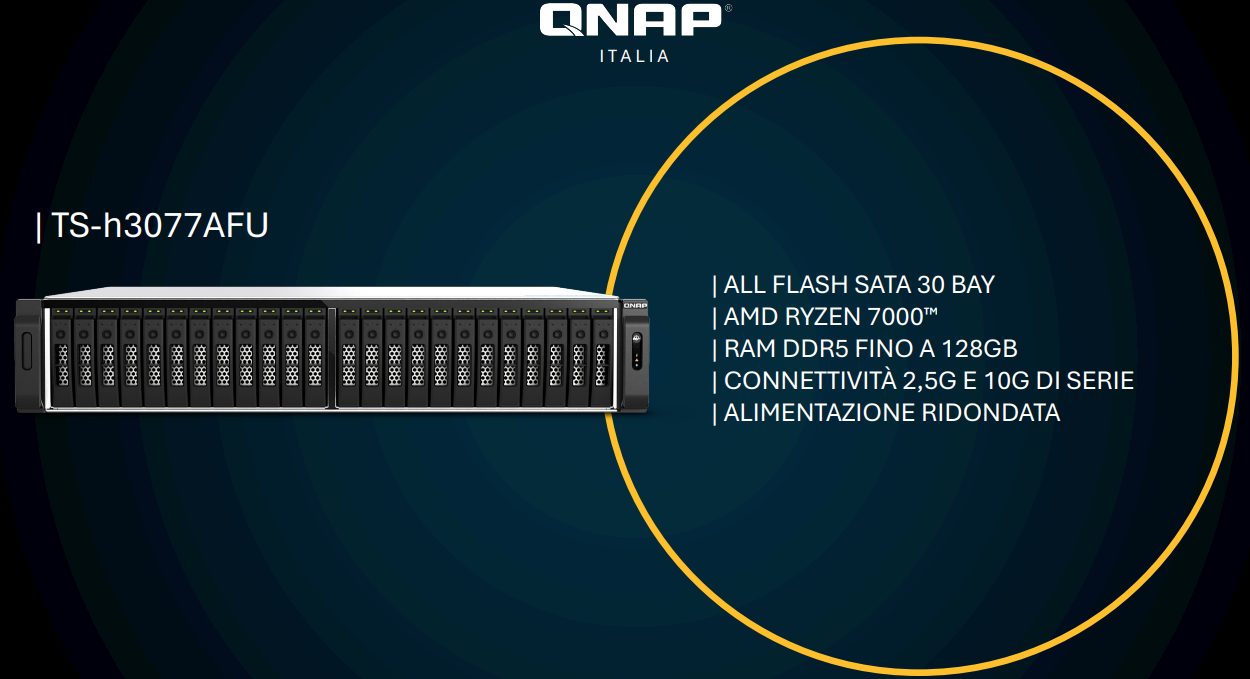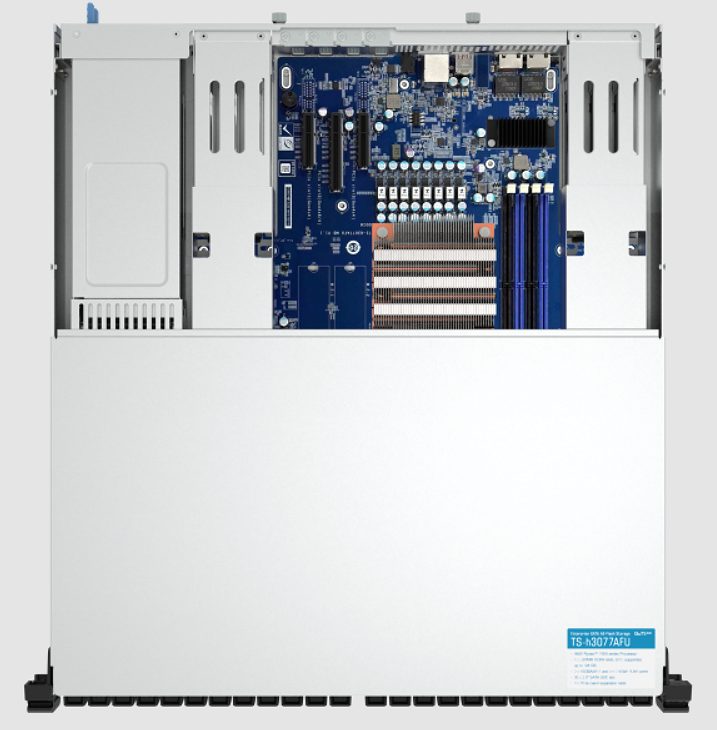The panorama of data storage has undergone an epochal transformation in the last two decades, with technological innovations that have redefined the ways in which information is stored, managed and accessed. From traditional systems to advanced solutions based also or only on the cloud, the technology sector data storage has changed significantly, impacting both the business sector and the daily lives of millions of users.
QNAP is one of the leading companies in the market of data storage, networking and cybersecurity solutions. Founded in 2004, who better than QNAP – which this year celebrates 20 years of activity – can tell how storage has changed and which products can professionals and companies use to embrace solutions tailored to their specific needs?
It is the storage solutions that must adapt to customer needs, not the other way around
Once upon a time, devices for centralized data storage based on dominated the scene RAID configurations (Redundant Array of Independent Disks), today the offer has become much more complex and multifaceted. It is no longer the individual user or the IT administrator who has to adapt to the products chosen for data storage but vice versa. It is the data storage solution, as QNAP also underlines in its technical courses, that must be tailor-made to meet the specific needs of each customer.
Today, for example, it is possible to choose niche products, intended for specific uses. QNAP, for example, has an extensive catalog that looks at a whole range of vertical markets. Look at the image in the figure: each of these sectors has storage needs and very different data management. QNAP can offer multiple solutions for each of them.
How RAID configurations have changed
The RAID configurations they are not dead. Far from it. They are always protagonists of modern data storage solutions. The RAID approach is the cornerstone of storage: launched in the 1980s, RAID offers redundancy and performance while improving security and reliability compared to the use of single hard drives.
Among the most common RAID schemes are RAID 0 (striping), RAID 1 (mirroring) e RAID 5 (striping with parity). All configurations that remain even today and should not be set aside at all (apart from RAID 0 which does not offer any type of redundancy).
With the increase of media capacity of storage and the exponential growth of the volume of data to be managed, the need for greater redundancy has emerged. RAID 6 allows you to “survive” two simultaneous failures, thanks to the so-called double parity.
With the advent of SSDs, the need to adapt configurations to make the most of their performance has emerged. RAID 10for example, combine striping e mirroring (RAID 1+0) offering a good balance between performance e redundancyideal for applications that require high reading and writing speeds.
Even more advanced RAID levels, such as RAID 50 (a combination of striping and RAID 5) e RAID 60 (which offers the most advanced protection) allow you to optimize the relationship between performance, redundancy and storage capacity in the various NAS systems. We talked about it in the article dedicated to how to choose the best NAS ever (for your business).
NAS Devices for Full Flash Storage (SSD)
What has changed in all these years are first of all the technologies used for it storage of the data and the interfaces to transfer information to and from the storage device (e.g. NAS), as well as to move the data entirely to the data storage device.
Take the TS-h3077AFU NAS for example: it is the best of the best of solutions for archive QNAP data. Beyond the number of integrated compartments (which are 30…), which allow you to enable storage capacity of the order of Petabyte, QNAP TS-h3077AFU is a SATA 6 Gbps Full Flash SSD NAS. This means that the system is completely based on SSD drive instead of traditional hard disks, which are much slower.
The QNAP NAS is indeed capable of expressing reading and writing performance top of the class: 1.6M e 1,2M IOPS 4K random read/write thanks to the use of the iSCSI protocol.
Using the interface PCIe Gen 4 allows you to focus on scalability: in short, the NAS is no longer conceived as a “static” device. which puts a ceiling on the processing capabilities of a professional or business. Conversely, it becomes a tool that knows how to adapt to data growthoffering extensive expansion possibilities.
PCIe Gen 4 therefore enables the use of further expansion slots: for example, it is possible to extend the storage capacities by connecting different JBOD housings.
Similar QNAP machines designed for different capacity needs are the TS-h1277AXU-RP and TS-h1677AXU-RP. Examples of JBOD expansions to be connected in cascade are TL-R1200PES-RP, TL-R1600PES-RP and TL-R2400PES-RP. Thanks to them you can even get to 2-3 Petabytes of storage space.
Processors that support the most demanding workloads
The most advanced QNAP NAS base their operation on processors capable of supporting workload challenging. Nothing even remotely comparable with the chips used in NASs of the past.
The aforementioned TS-h3077AFU, for example, uses the CPUs from the series AMD Ryzen Embedded 7000. This is a solution that offers high performance and high energy efficiency: the ratio is that the NAS is today not just a mere device for storing data but a sort of advanced, complete and versatile computer, which allows you to install applicationsto perform hardware processing, to enable server functionality, to run virtual machines, to process video in real time and much more.
TS-h3077AFU meets the demand for high performance in data management workflows video 4K/8K, for companies that need to archive and organize large amounts of data, for companies that make use of virtualization solutions. The integrated video section AMD Radeonhelps deliver quality, power-efficient graphics performance for multimedia processing and multitasking.
The high IOPS performance they ensure response times in terms of microseconds, also simplifying the management of unstructured data and intensive I/O workloads, such as those that characterize the main virtualization solutions. The NAS meets the most advanced storage needs streaming multimediale 4K/8K and of post productionimproving multimedia workflows with rapid data transfers, access and backups.
Infrastructure and networking must grow accordingly
Look at solutions Full Flash for data storage makes little sense if the company does not advance the network infrastructure accordingly. There connectivity 2.5 e 10 Gbps present by default on many QNAP brand NAS, it allows you to transfer data to and from the storage medium at the maximum possible speed.
If the company still used Ethernet cables Cat-5 o Cat-5e, it would not make sense to equip yourself with a latest generation NAS, because you would always have a bottleneck that significantly reduces the achievable performance. Even by updating the network, the bottleneck it could concern switches, which are often not adequate to support intensive data transfers.
QNAP QSW-M7308R-4X is one 100 GbE managed switch which allows you to support the workload most challenging in the company: it meets the needs in terms of bandwidth for archiving and managing big data, video editing, virtualization and AI applications. It also helps accelerate the deployment of high-speed data storage centers, “smart medicine” solutions and meets the needs of professional multimedia practices.
Lo switch managed It has 4 doors 100 GbE QSFP28 and 8 fiber ports 25 GbE SFP28which support i transceiver DAC or LR/SR with compatible interfaces. The 25GbE SFP28 interface is
retrocompatibile con 10GbE SFP+ and 1G SFP. The device also supports streaming full-duplex mode e FEC (Forward Error Correction) to ensure efficient and reliable data transmission at very high speed.
QSW-M7308R-4X is obviously QNAP’s “top” product: just think that it supports 1,200 Gbps in terms of backbone. QNAP’s idea, however, is to support – with concrete, affordable solutions – the updating of 10 Gbps network architectures which many customers are now able to completely exhaust.
NAS with Thunderbolt on board
Until a few years ago, NAS connected…







